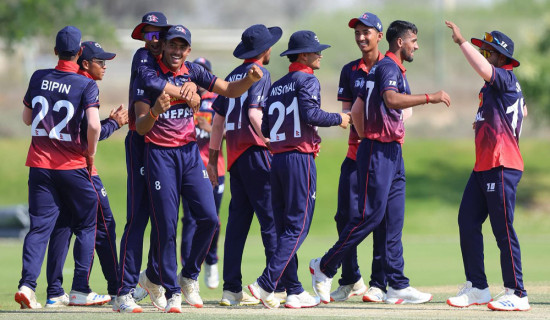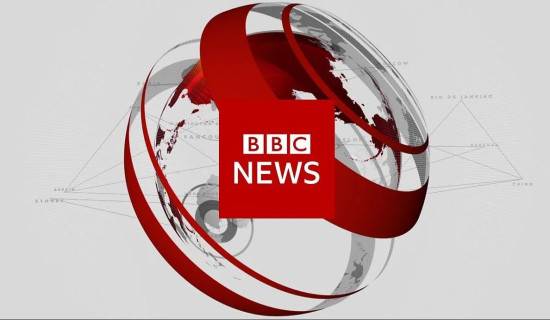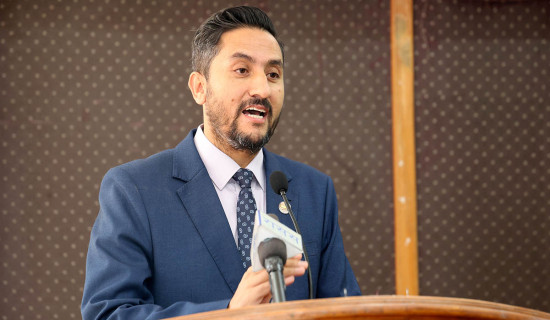- Wednesday, 17 December 2025
BRI For Infrastructure Development
As Prime Minister K.P. Oli prepares for his official visit to China at the invitation of his counterpart Le Qiang, foreign policy discussions has increasingly focused on Belt and Road Initiative (BRI) project agreement. During the past weeks, this issue has sparked intense debate across several forums. As it is taking place in a challenging national and international environment, particularly amid strained relation with India, PM Oli's visit to China and the deals he is likely to make with the Chinese government on BRI implementation are expected to draw close scrutiny both at home and abroad.
Nepal has endorsed BRI project by signing Memorandum of Understanding with China in 2017. However, a comprehensive agreement on specific projects, which is necessary to enter the phase of its implementation, is yet to be signed. After the BRI project was unveiled by Chinese President Xi Jinping as a global infrastructure initiative to bring economic integration through global infrastructure and connectivity projects, more than 150 countries have joined the initiative through agreements.
Global infrastructure initiative
The BRI is China's largest global infrastructure initiative with focus on improving economic integration and connectivity among its partner countries. Nepal's decision to join BRI was driven by its desire to leverage China's success for developing infrastructure, creating industrial zones and improving cross-border connectivity through roads, railways, electricity transmission and communication. Before Nepal joined this project, a number of South Asian countries had already joined BRI because of its potential for addressing infrastructure deficit often caused by limited resources and lack of expertise. BRI has enabled these countries to gain access to resources and expertise for building critical infrastructures like railways, roads, ports, airports and connectivity.
In South Asia, Bangladesh, Sri Lanka, Pakistan and the Maldives have already gained experience in implementing BRI projects. Bangladesh has implemented tunnel construction, energy generation, transportation, airport expansion, sewage treatment and establishment of economic zones. These projects have brought visible infrastructural transformation in Bangladesh.
The Maldives has also received BRI project funds for building bridge, land reclamation and urban development, airport expansion and housing project. These projects have significantly helped to transform the infrastructural landscape of the Maldives. However, there are concerns about debt dependency as the tiny South Asian country owes 1.5 million dollars to China. There are accusations that the BRI project has led to inescapable debt trap for the Maldives. China's presence in the Maldives has also raised tension with the United States and India given the strategic location of this region.
Sri Lanka is yet another country which has undergone an unprecedented transformation in its infrastructure development through BRI. The Hambantota Port is the most iconic BRI project implemented in Sri Lanka. In addition, projects like Mattala Rajapaksa International Airport, Colombo-Kutunayake Expressway and Southern Expressway were also developed under BRI. These projects have significantly contributed to stimulate economic activities by increasing connectivity, trade and industries, though China's influence in this region has heightened geopolitical tension, particularly between China, USA and India.
The projects under BRI which have been implemented in various South Asian countries have received mixed reaction. Though these projects contribute in enhancing infrastructural status of these countries, creating jobs and stimulating economic growth, they have also sparked controversies. Western powers are criticising the project for creating a "debt trap" for poor resource-constrained countries. India and USA are particularly keen on opposing these projects as the bridgeheads for the expansion of Chinese influence.
Of all these countries of South Asia, Nepal has not succeeded to move ahead with the BRI project despite being the part of it. Nepal had agreed to participate in the project with a view to leveraging China's economic power for improving infrastructures including roads, railways, energy generation, transmission and communication. But nothing has come its way so far.
Nepal's political parties have reached consensus on accepting infrastructure projects offered by friendly countries. Among these, BRI and Millennium Challenge Corporation (MCC) are the most outstanding projects with potential to be game-changer for Nepal. The MCC is under implementation but the international concerns about the downsides of the BRI project have hampered progress toward its implementation. The BRI, which is basically a loan-based project, has sparked debate among the coalition partners and independent intelligentsia. Despite the potential benefits, the coalition partners have failed to reach an agreement on whether to accept loan-based project or not.
The UML appears to be ready to accept soft loans with preferential interest rate but its coalition partner Nepali Congress is against agreeing on the idea of taking loan from China for fear of falling into the so-called "debt trap". China is one of our largest bilateral development partners of Nepal. If we refuse to move further with the BRI after signing the first framework agreement, we may lose an opportunity to keep pace with the rest of the south Asian neighbours in improving infrastructure, increasing connectivity and getting connected to international value chain. We are in a precarious state of development. If we fail to make proper judgment of the prevailing wind and trim our sails accordingly, we may be left behind.
Fairer deal
We should, however, be able to strike a fairer deal, insist on transparency, negotiate to reach the common ground and ensure that agreed projects align with national development priorities of our countries. Foreign assistance should not be accepted if it does not reinforce our national competence. It is essential to thoroughly analyse and assess the viability, profitability and long-term sustainability of such aids before accepting them. Any major project must generate employment, stimulate economic growth and promotes connectivity.
While experience of the countries implementing the BRI project highlights its potential for fostering infrastructure, we must also be cautious about the associated risks. Nepal's prudent course of action will be to direct BRI project funds towards ambitious but sustainable enterprises that foster growth and generate employment. The key sectors to focus on include agricultural farming, hydroelectricity generation, power transmission, pharmaceutical enterprise and cross border road network. This approach will ensure that Nepal avoids the challenges faced by Sri Lanka, the Maldives and Djibouti.
(Dr. Bharadwaj is former ambassador and former chairperson of Gorkhapatra Corporation.)
















